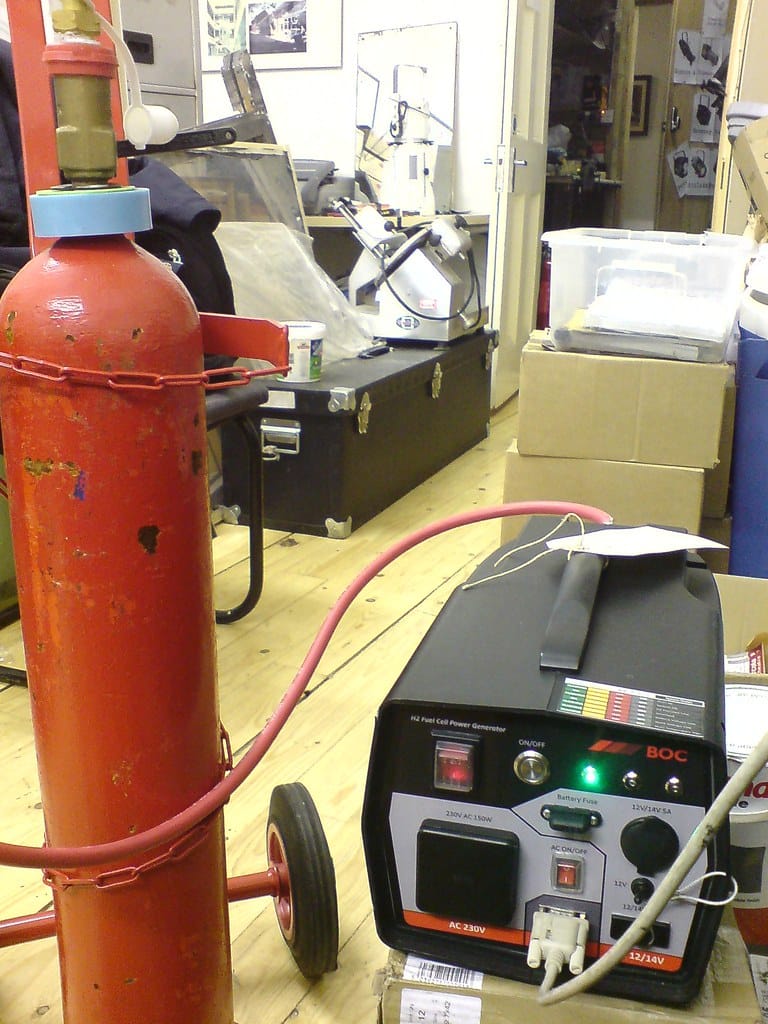Revolutionary Electrolyte Technology Could Make Hydrogen Fuel Viable in Freezing Conditions
Scientists have achieved a major breakthrough that could finally make hydrogen fuel cells practical for cold-weather applications, potentially revolutionizing everything from winter transportation to Arctic energy systems. A new "electrolyte highway" technology enables hydrogen fuel cells to operate efficiently at temperatures as low as -40°C, addressing one of the technology's most persistent limitations.
The Cold Problem That's Plagued Hydrogen
Hydrogen fuel cells have long been hailed as a clean energy solution, producing only water vapor as a byproduct. However, their Achilles' heel has been performance degradation in cold temperatures. Traditional polymer electrolyte membrane (PEM) fuel cells suffer dramatically reduced efficiency below freezing, with power output dropping by up to 50% at -20°C.
This limitation has severely restricted hydrogen's potential in cold climates, where heating systems and transportation face their greatest energy demands. Countries like Canada, Norway, and northern regions of the United States have struggled to integrate hydrogen technology into their energy infrastructure due to these temperature constraints.
Engineering the Electrolyte Highway
Researchers at the University of Science and Technology of China have developed what they call an "electrolyte highway" – a novel membrane design that maintains ionic conductivity even at extreme sub-zero temperatures. The breakthrough centers on creating aligned ion channels within the membrane structure, allowing protons to flow efficiently despite the cold.
The team's membrane incorporates specially designed polymer chains with enhanced flexibility and anti-freezing properties. By engineering the molecular structure at the nanoscale, they've created pathways that remain open and conductive even when traditional membranes would freeze and fail.
Laboratory tests demonstrate that fuel cells equipped with this new membrane technology maintain 85% of their room-temperature efficiency at -40°C, compared to just 30% for conventional systems.
Economic Impact and Market Potential
The cost implications of this breakthrough extend far beyond the laboratory. Current hydrogen fuel cell systems require expensive heating systems and insulation to operate in cold climates, adding $15,000-25,000 to vehicle costs in northern markets. The new technology could eliminate these requirements, making hydrogen vehicles cost-competitive with battery electric vehicles in cold regions.
Industry analysts project that expanding hydrogen's viable operating range could unlock a market worth $180 billion by 2030. This includes applications in:
- Transportation: Hydrogen trucks and buses for northern logistics routes
- Stationary power: Backup power systems for remote cold-weather facilities
- Industrial applications: Manufacturing processes in unheated environments
- Emergency services: Portable power for disaster response in winter conditions
Real-World Applications Taking Shape
Several major manufacturers are already expressing interest in commercializing this technology. Toyota, which has invested heavily in hydrogen fuel cell development, announced plans to test the new membranes in their next-generation Mirai vehicles. Similarly, Ballard Power Systems is exploring applications for heavy-duty transportation in Canada and Scandinavia.
The technology could prove particularly transformative for remote communities in Alaska, northern Canada, and Siberia, where diesel generators currently provide expensive and polluting backup power. Hydrogen fuel cells with cold-weather capability could offer a clean, reliable alternative for year-round operation.
Challenges and Timeline to Market
Despite the promising laboratory results, several hurdles remain before widespread commercialization. The new membranes must undergo extensive durability testing to ensure they can withstand thousands of freeze-thaw cycles without degradation. Manufacturing scalability also presents challenges, as the precise molecular engineering required may initially limit production volumes.
Cost remains another consideration. While the technology eliminates expensive heating systems, the specialized membrane materials may carry premium pricing initially. However, researchers estimate that mass production could achieve cost parity with current cold-weather solutions within five years.
A Game-Changer for Clean Energy
This electrolyte highway breakthrough represents more than just an incremental improvement – it could be the key to unlocking hydrogen's full potential as a clean energy carrier. By eliminating temperature limitations, the technology expands hydrogen fuel cells' addressable market from temperate regions to truly global applications.
As governments worldwide intensify efforts to decarbonize their energy systems, technologies that work reliably in all climates become increasingly valuable. This breakthrough suggests that hydrogen's role in the clean energy transition may be larger than previously imagined, extending its reach into the world's coldest regions where energy needs are often greatest.
The path from laboratory to market typically takes 5-7 years for fuel cell technologies, meaning commercial applications could emerge by 2030 – just in time to support aggressive climate goals and expanding hydrogen infrastructure investments.
